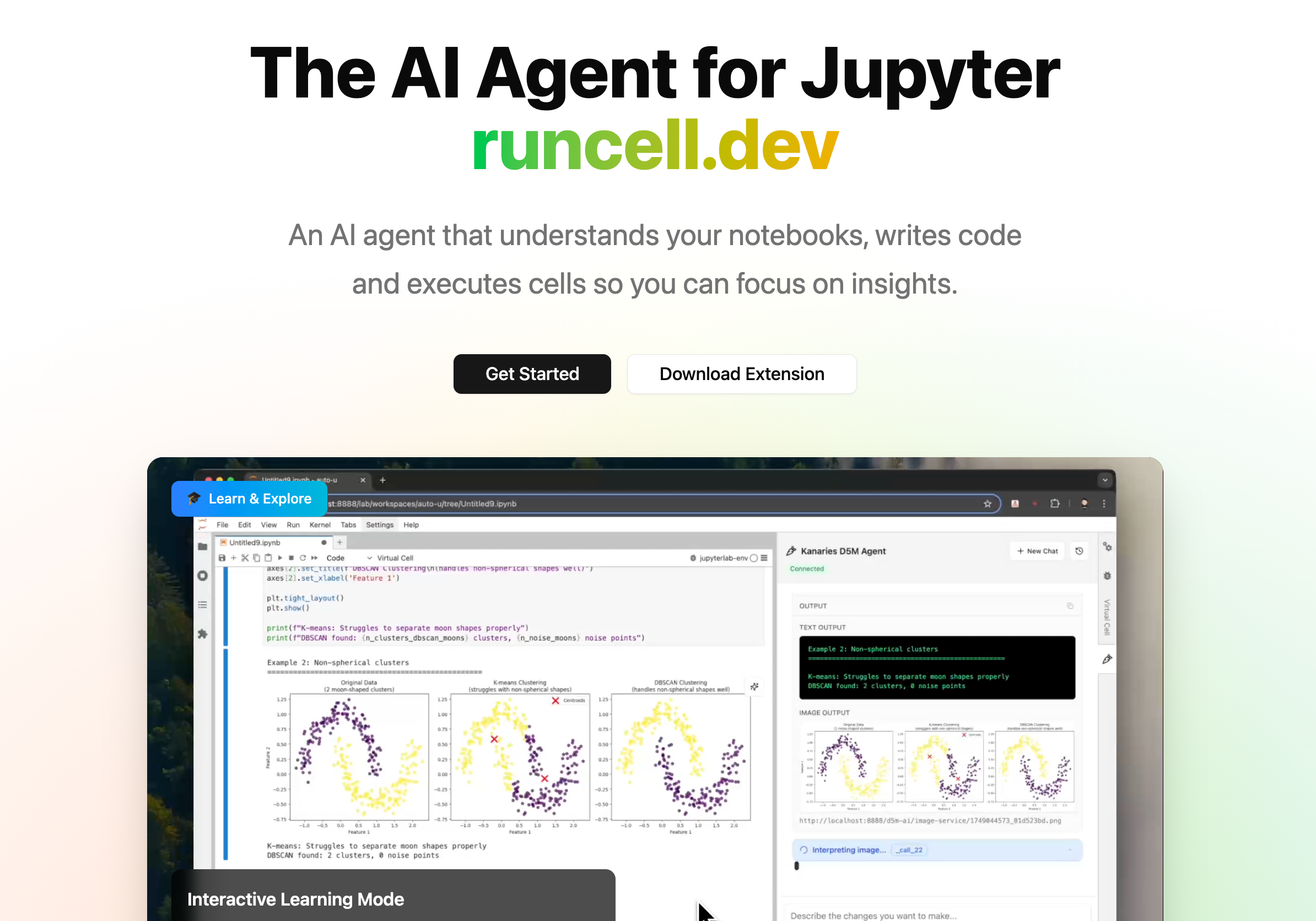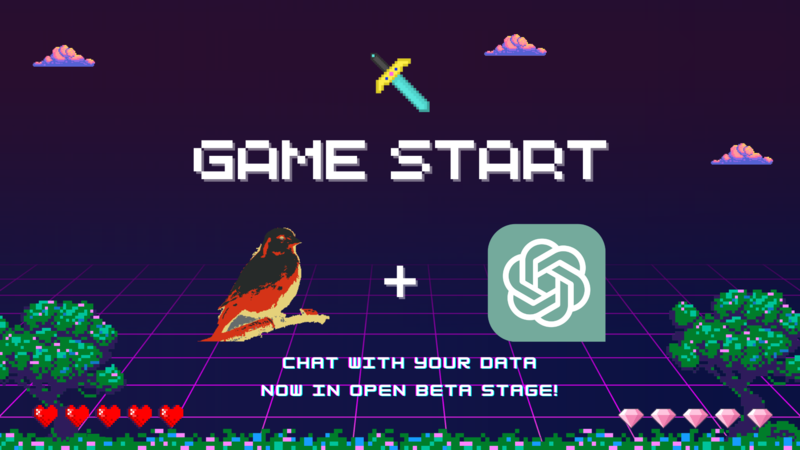The ChatGPT Prompt Cheat Sheet: Tips, Tricks, and Examples for Crafting Effective Prompts
Updated on
Introduction
ChatGPT is an advanced AI language model developed by OpenAI, designed to generate human-like text based on the prompts it receives. To harness its full potential and get the best results, it's essential to craft effective prompts. This comprehensive guide will provide you with tips, tricks, and real-world examples to help you create powerful prompts effortlessly. Dive in and explore the world of ChatGPT prompts!
Section 1: Basic Prompting Techniques
1.1 Be specific
When crafting a prompt for ChatGPT, it's crucial to be specific and clear about the information you want. Providing clear instructions helps the model generate accurate and relevant responses.
Example:
Instead of:
Tell me about AI
Use:
Explain the difference between artificial intelligence and machine learning.
The AI Agent for Jupyter Notebooks
An AI agent that understands your notebooks, writes code and executes cells so you can focus on insights. Accelerate your data science workflow with intelligent automation that learns from your coding patterns.

1.2 Set a format
Defining the format you want the output in can help ChatGPT deliver the desired response. Specify whether you want a list, paragraph, bullet points, or any other format.
Example:
List 5 key differences between AI and machine learning.
Section 2: Advanced Prompting Techniques
2.1 Multi-step prompts
For complex queries, you can use multi-step prompts that break down the question into smaller parts. This helps ChatGPT provide more comprehensive answers.
Example:
First, explain supervised learning. Second, describe unsupervised learning. Finally, discuss reinforcement learning and its applications.
2.2 Instruct the perspective
To control the perspective of the generated text, specify whether you want the response in the first, second, or third person.
Example:
Write a paragraph on machine learning in the first person.
Section 3: Prompting for Creativity
3.1 Emojis and text manipulation
ChatGPT can incorporate emojis and other text manipulations into its responses to create more engaging content.
Example:
Write a tweet about machine learning and include at least two emojis.
3.2 Dialogue and Storytelling
Craft prompts that encourage ChatGPT to generate dialogues or stories, allowing for more creative and engaging outputs.
Example:
Create a conversation between a machine learning expert and a curious student.
Section 4: Customizing Output Structure
ChatGPT can generate text with various output structures, such as:
4.1 Headings and subheadings
Use headings and subheadings to organize the content and make it more reader-friendly.
Example:
Write an article on machine learning applications, with headings for each application and subheadings for their advantages and disadvantages.
4.2 Lists and tables
Ask ChatGPT to create lists or tables to display information in a structured format.
Example:
Create a table comparing supervised, unsupervised, and reinforcement learning.
Section 5: Handling Ambiguity and Providing Context
Sometimes, prompts may require additional context or clarification to guide ChatGPT towards generating the desired output. In such cases, providing context or asking the AI to assume certain conditions can help.
5.1 Provide context
Add relevant context to your prompts to help ChatGPT generate more accurate and relevant responses.
Example:
Assuming I am a beginner in the field of AI, explain the concept of deep learning and its applications.
5.2 Handle ambiguity
Address potential ambiguity in your prompts by specifying the context or domain in which the AI should generate its response.
Example:
Explain how neural networks are used in the context of natural language processing.
Section 6: Prompting for Different Content Types
ChatGPT is versatile and can generate various content types, from informative articles to creative stories. Here are some examples:
6.1 Informative articles
Craft prompts that guide ChatGPT to generate informative and well-researched articles on a specific topic.
Example:
Write an informative article about the history and development of artificial intelligence, including major milestones and influential figures.
6.2 Creative stories
Ask ChatGPT to generate engaging and imaginative stories based on specific themes or characters.
Example:
Write a short science fiction story about a world where humans and AI live together in harmony.
6.3 Product descriptions
Use ChatGPT to create compelling and detailed product descriptions that highlight key features and benefits.
Example:
Write a product description for a state-of-the-art AI-powered home security system, emphasizing its advanced features and ease of use.
Section 7: Prompting for Emotion and Tone
ChatGPT can generate text with different emotional tones and styles. Here's how to guide the AI towards specific emotions or tones in its responses:
7.1 Specify the emotion or tone
Clearly state the emotion or tone you want ChatGPT to convey in its response.
Example:
Write an inspiring paragraph about the potential of AI to transform society for the better.
7.2 Use emotionally charged words
Incorporate emotionally charged words in your prompt to guide ChatGPT towards generating a response with the desired emotional tone.
Example:
Write a heartwarming story about a young AI researcher who overcomes obstacles to achieve their dreams.
Section 8: Avoiding Inappropriate Content
To ensure that ChatGPT generates appropriate content, follow these guidelines:
8.1 Set content boundaries
Establish clear boundaries for the content you want ChatGPT to generate, specifying what should and should not be included.
Example:
Write a humorous, family-friendly story about a robot that learns to cook.
8.2 Request content moderation
Ask ChatGPT to moderate its own content and generate a response that is suitable for a general audience.
Example:
Write an engaging blog post about AI ethics, ensuring that the content is appropriate for all ages and backgrounds.
Conclusion
The ChatGPT Prompt Cheat Sheet offers valuable tips and examples to help you craft effective prompts and harness the full potential of this powerful AI language model. Remember to be specific, set the desired format, incorporate creativity, and optimize for keyword-rich SEO. With these techniques in your arsenal, you're all set to explore the endless possibilities that ChatGPT has to offer. Happy prompting!
Further Reading: To further enhance your capability in boosting your productivity with ChatGPT, you can check out the latest development from Kanaries RATH, which binds Data Science with ChatGPT capacities perfectly together:
Imagine you can simply ask a question to a Chat, and get instant data visualizations and data insights without messing with Excel, AirTable, Power BI or Python coding for hours. This is what Kanaries RATH (opens in a new tab) is working on:
Interested? Inspired? Unlock the insights of your data with one prompt: ChatGPT-powered RATH is Open for Beta Stage now! Get onboard and check it out!
